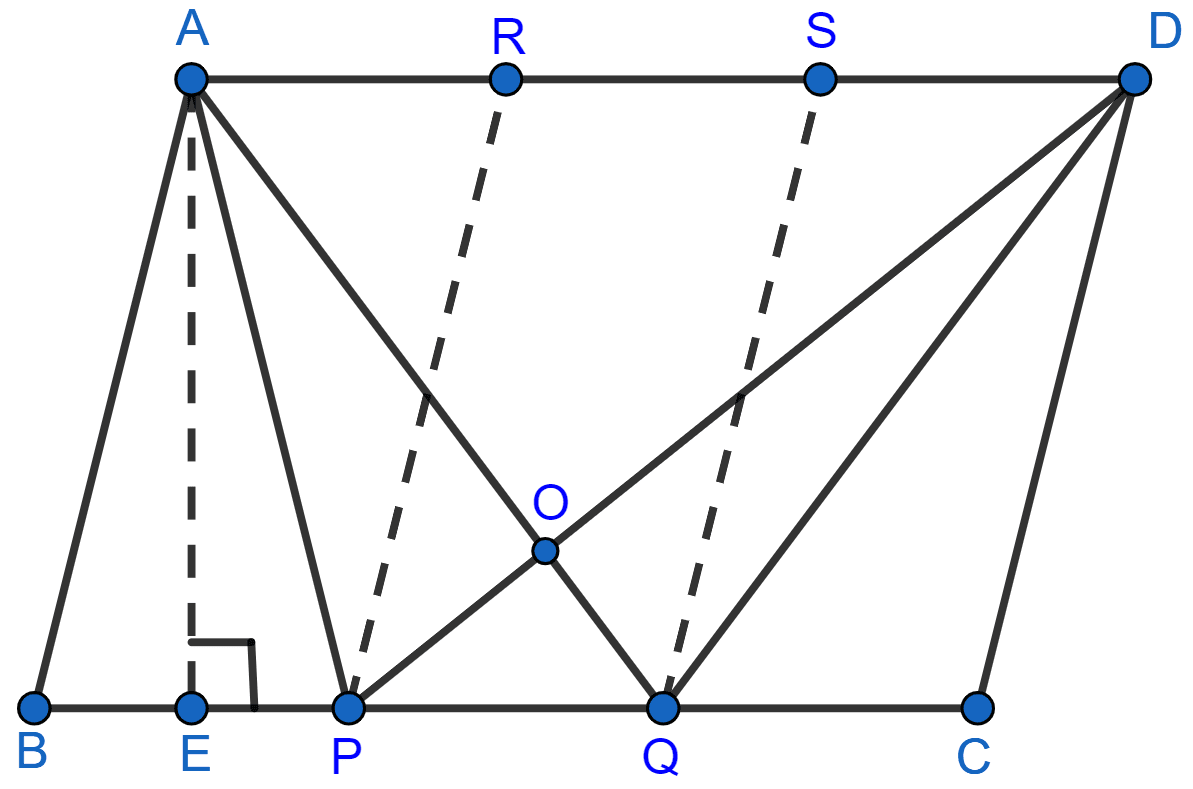Mathematics
In figure (1) given below, ABCD is a parallelogram. Points P and Q on BC trisect BC into three equal parts. Prove that :
area of ∆APQ = area of ∆DPQ = (area of ||gm ABCD)

Theorems on Area
18 Likes
Answer
Construct: Through P and Q, draw PR and QS parallel to AB and CD.

Area of ∆APD = Area of ∆AQD [Since ∆APD and ∆AQD lie on the same base AD and between the same parallel lines AD and BC]
Area of ∆APD – Area of ∆AOD = Area of ∆AQD – Area of ∆AOD [On subtracting ar ∆AOD on both sides]
Area of ∆APO = Area of ∆OQD ……. (i)
Area of ∆APO + Area of ∆OPQ = Area of ∆OQD + Area of ∆OPQ [On adding area of ∆OPQ on both sides]
Area of ∆APQ = Area of ∆DPQ ……. (ii)
We know that, ∆APQ and ||gm PQSR are on the same base PQ and between the same parallel lines PQ and AD.
Area of ∆APQ = Area of ||gm PQRS ……. (iii)
From figure,
Height of || gm ABCD = Height of || PQRS = AE
Since, P and Q trisect BC so,
⇒ PQ =
⇒ BC = 3PQ.
Substituting above value in (iii) we get,
⇒ Area of ∆APQ = Area of ||gm ABCD = Area of ||gm ABCD.
⇒ Area of ∆APQ = Area of ||gm ABCD ……..(iv)
From (ii) and (iv) we get,
area of ∆APQ = area of ∆DPQ = (area of ||gm ABCD).
Hence, proved that area of ∆APQ = area of ∆DPQ = (area of ||gm ABCD).
Answered By
9 Likes
Related Questions
In figure (2) given below, area of ∆ABD is 24 sq. units. If AB = 8 units, find the height of △ABC.

In figure (3) given below, E and F are midpoints of sides AB and CD, respectively, of parallelogram ABCD. If the area of parallelogram ABCD is 36 cm2,
(i) state the area of ∆APD.
(ii) Name the parallelogram whose area is equal to the area of ∆APD.

In figure (2) given below, DE is drawn parallel to the diagonal AC of the quadrilateral ABCD to meet BC produced at point E. Prove that area of quad. ABCD = area of ∆ABE.

In the figure (3) given below, ABCD is a parallelogram. O is any point on the diagonal AC of the parallelogram. Show that the area of ∆AOB is equal to the area of ∆AOD.
